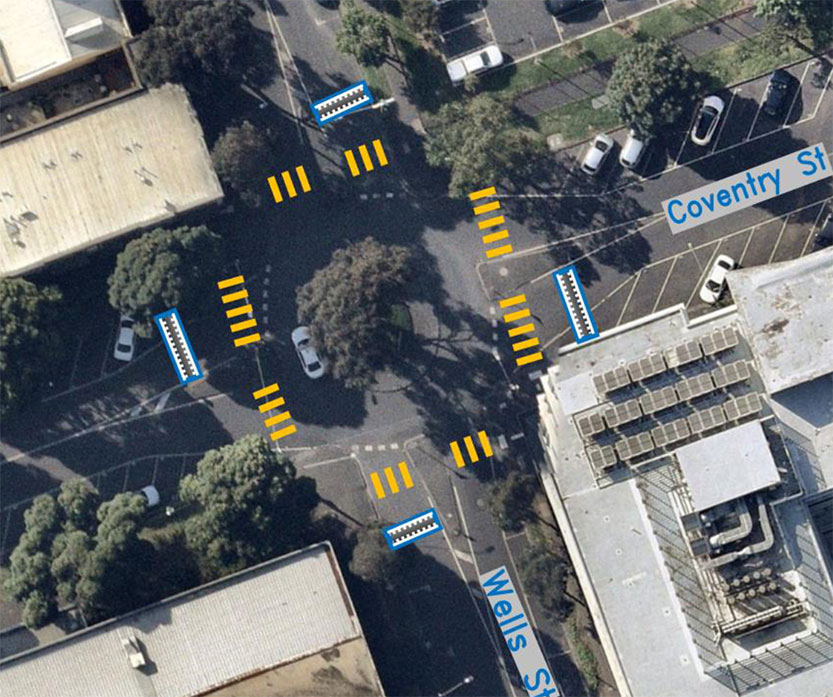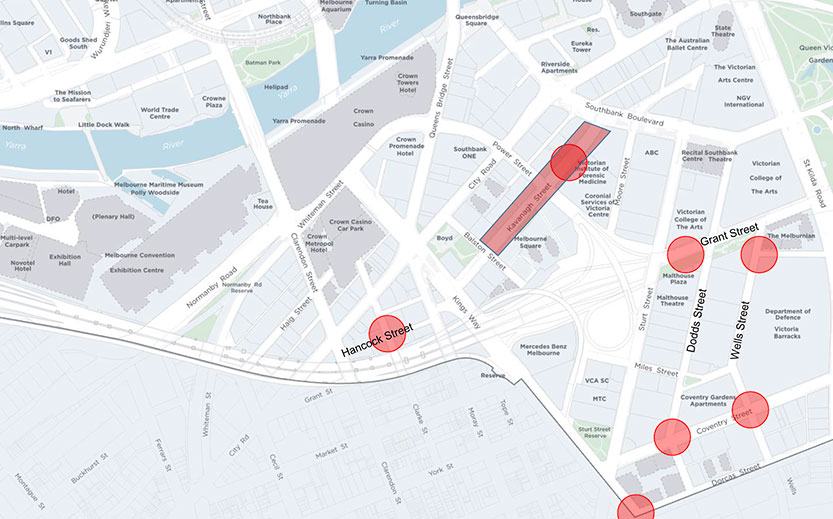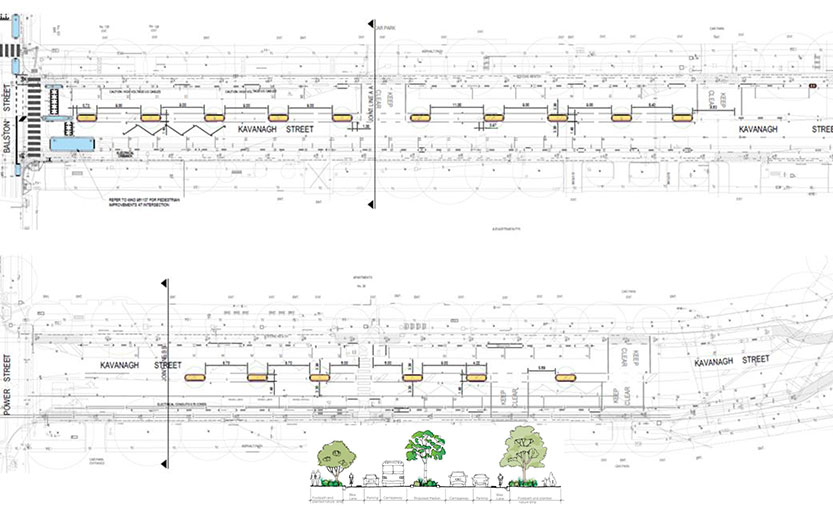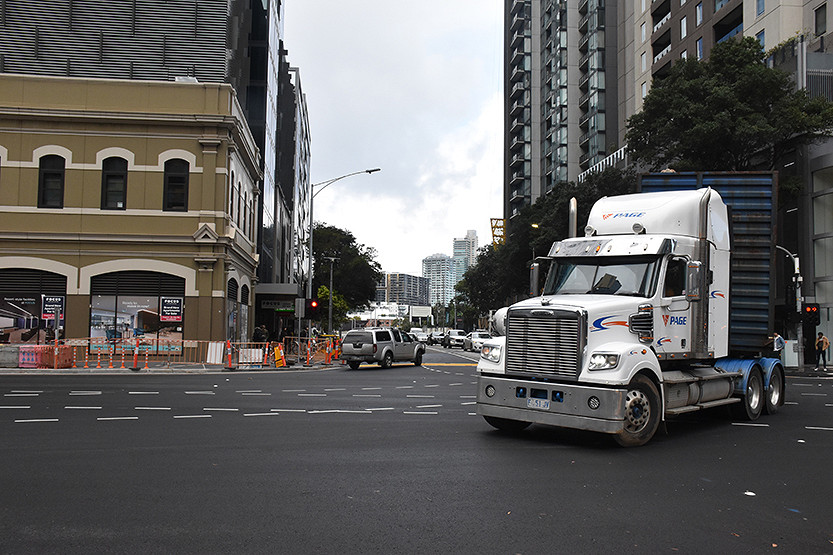
New crossings; tree islands proposed under council street safety study
The City of Melbourne has flagged new raised crossings in various locations around Southbank, as well as a series of “tree islands” along Kavanagh St in a bid to improve pedestrian safety.
The proposed changes follow the council’s $500,000 “Improving road safety and walkability in Southbank” review, which earlier this year called on locals to identify locations in the area where pedestrian safety was of concern.
The consultation process that concluded in April included an online mapping tool which received a significant 1160 contributions from locals, with a majority of these raising issues along state-managed roads including City Rd, Power St, and Clarendon St.
Following consultation, two community information sessions were held with resident groups Southbank3006 and Southbank Residents’ Association (SRA) last month, where council officers presented eight proposed safety upgrades.
With the council only having remit over streets it manages, the initial upgrades are mainly proposed for local streets throughout Southbank Village, as well as Kavanagh and Clarke streets. They include:
- Zebra crossings and road humps for the roundabout intersections of Coventry and Wells streets, as well as Coventry and Dodds streets
- Upgrading the existing crossing on Kavanagh St outside the Coroners Court of Victoria to a raised “wombat crossing”
- Installing “tree islands” along the two major sections of Kavanagh St between Balston and Power streets, as well as Southbank Boulevard and Power St.
- Three zebra crossings and road humps along Grant St, between Sturt St and Wells St
- Kerb extensions and road humps surrounding existing zebra crossing on Clarke St
- Zebra crossing and road hump at the intersection of Wadey and Wells streets
- Zebra crossing for Dorcas St at Kings Way – a jointly funded project with the TAC and the City of Port Phillip.

Lord Mayor Sally Capp said the council was “always looking for ways to make walking and driving on our streets and laneways safer”.
“Southbank is one of the city’s most densely populated areas, which is why it’s important we make it easier and safer to walk around the area – including through unobstructed footpaths, improved seating and more tree canopy coverage,” Cr Capp said.
“We’ll be investing $500,000 over the next five years to make sure Southbank is as safe and accessible as possible for residents and visitors – prioritising projects that community members want to see under way first.”
The council said projects were currently being prioritised based on feedback from recent community information sessions, which would then undergo design development this financial year and be programmed for construction in the 2024-25 financial year.
It added that the community would have the opportunity to have its say on which projects should be prioritised in the next phase of consultation.
But at the community information session hosted by SRA on November 1, SRA’s president Tony Penna expressed his frustration to council officers about the process, arguing that current projects had been proposed based on just a handful of comments each.
He added that by not making the distinctions between state and locally managed roads clear during the consultation, the council had created the “perception” that actions could be taken to address areas of greatest concern.
However, a council officer confirmed during the meeting that the City of Melbourne intended to share all feedback received during consultation with VicRoads to help inform potential changes at City Rd, and Power and Clarendon streets, as well as Kings Way.
Locals also queried why no changes had been proposed for the council-managed Sturt St, despite being another location which was the subject of significant feedback, particularly the intersection at Miles St near the Victorian College of the Arts Secondary School.
The officer told the meeting that Yarra Trams had plans to reposition and upgrade tram stops along Sturt St, and that the council’s review therefore hadn’t budgeted for safety treatments.
“We’ll give the data to Yarra Trams and VicRoads, but Yarra Trams is doing a lot of work in Sturt [St] and it’s part of their project to upgrade all stops to platform tram stops,” the council officer told the meeting.
“They’re relocating the existing stops to where the platform stops will be, as well as widening the stops so it will slow down traffic and provide or move signalised crossings to align with those stops. Basically, it’s a gold plate treatment.”
A spokesperson for the Department of Transport and Planning, which is the responsible authority for tram stop upgrades, was unable to confirm when these works would occur, but highlighted that the way in which tram stop upgrades were planned had changed.
“We recognise the important role trams play along Sturt St in Southbank and we continue to work with the City of Melbourne to ensure passengers using trams in the area can get where they need to go safety and efficiently,” the spokesperson said.
With Melbourne’s more than 1600 tram stops now grouped into “corridors”, the department said this allowed for improvements to be assessed along stretches of stops rather than on a stop-by-stop basis and to plan for a more accessible and interconnected network.
The first three corridors the government will focus on are in Footscray/Maribyrnong, Thornbury/Northcote and Fitzroy/Collingwood, while stops in other areas, including Sturt St, will be considered as part of future development packages.
While labelling the council’s initiative overall as a “success”, Southbank3006 president David Hamilton said meaningful change would only occur through a “comprehensive traffic management plan all of Southbank developed by the council and VicRoads”.
“This will enable the development of low traffic neighbourhoods across Southbank that prioritise pedestrians and cyclist safety and enable local resident vehicle movements,” Mr Hamilton said.
“Southbank3006 actively supported the council’s public engagement program, and we believe that the pedestrian safety initiative this was a success. It forms part of a learning curve for both residents and council.”
“But we need to recognise that the council is limited both in terms of budget and reach as to what it can ‘solve’ with engineering improvements without a comprehensive agreed traffic management plan developed jointly with VicRoads for all of Southbank.” •

Revitalisation of Alexandra Gardens progresses

Build-to-rent development gets green light in South Melbourne







 Download the Latest Edition
Download the Latest Edition